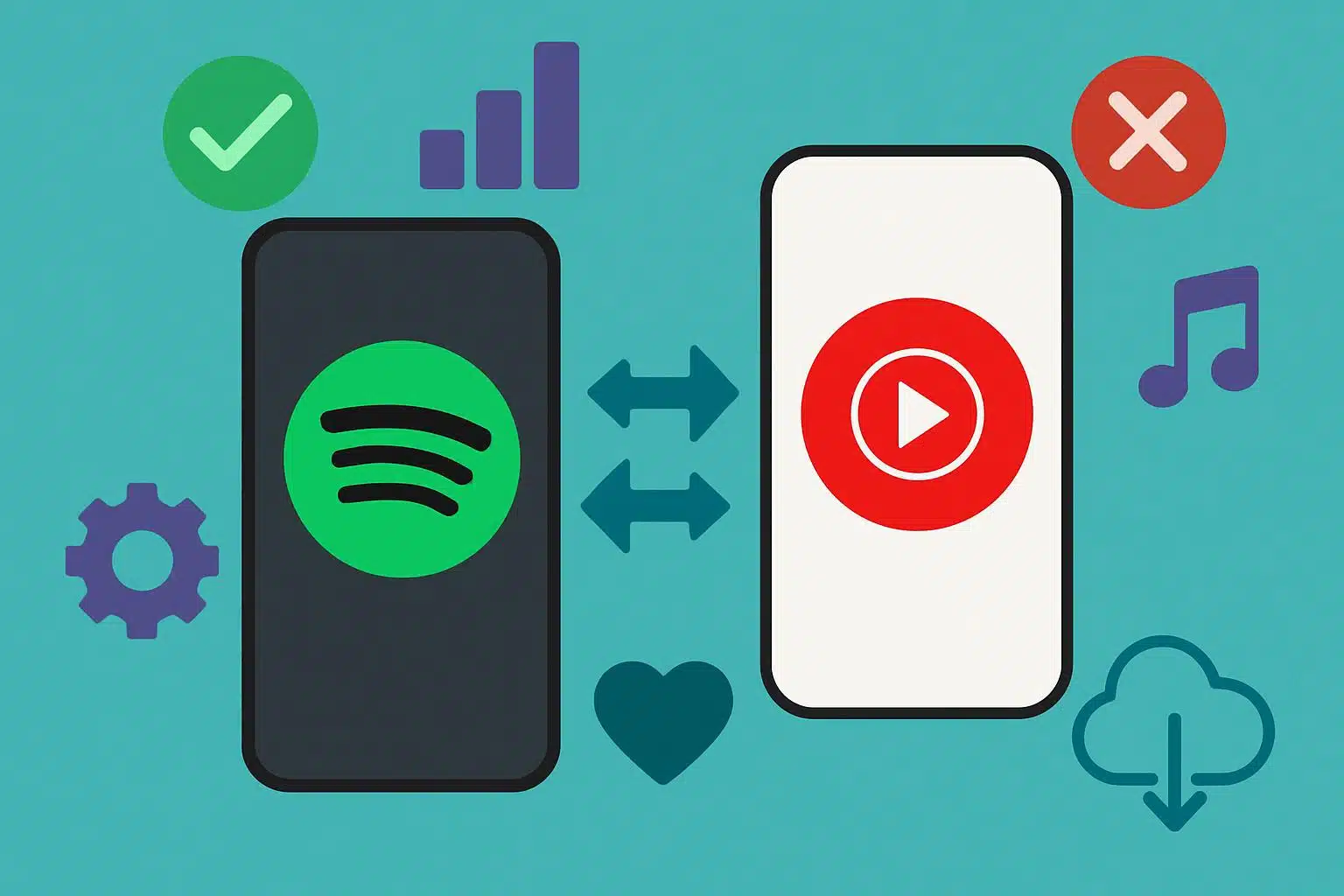Streaming can seem interchangeable, but the specifics distinguish a good music service from a great one. Spotify and YouTube Music have gigantic, slick mobile apps with essentially all the same music, but in day-to-day use, you see chasms of discrepancy where Spotify feels just more polished, more social, more everywhere.
Based on user experience and industry trends, these are the six places that Spotify still enjoys a meaningful advantage — the kind that shapes habits, increases discovery and keeps you listening longer.
Wide Device Support With Real Desktop Apps
Spotify isn’t just there for you on your phone; it’s pretty much on every other screen, too. Windows, macOS, Linux, PlayStation and Xbox native apps also provide an integrated system experience with proper media key support, background updates and offline downloads on desktop — perfect for those long flights or when you’re not paying attention.
YouTube Music tilts heavily toward the web, so there are fewer native controls, no desktop offline mode. For a service you spend hours with at a time, the delta between a native app and a souped-up browser window is night and day.
Seamless Handoff via Spotify Connect Across Devices
Spotify Connect is practically a remote control for your audio life. Initialize a playlist on a laptop, pass it along to a soundbar, jiggle the queue from your phone and stay in command without any of those odd casting or mirroring issues. It’s consistently cross-platform and deeply embedded across speakers, TVs, consoles and cars.
YouTube Music does cast, but Connect’s always-on device graph and ultra-low-latency control are in a class of their own. Bouncing audio off rooms or devices becomes second nature once you live with it.
Personalization That Feels Psychic and Spot-On
Spotify’s recommendation engine remains the gold standard. Discover Weekly, Release Radar, Daily Mixes, On Repeat and the AI DJ are not just playlists; they’re habit machines. Company disclosures and industry analyses have long attributed large amounts of overall streams to personalized programming, an indication that users do more than just sample — they stick.
Much of what makes it effective might be more easily transferable to music than the kinds of listening aids employed by streaming services like Spotify, but there’s little question that we know so much more about your tastes. YouTube Music could conceivably surface hidden gems thanks to its video DNA — whereas Spotify’s feedback loops, skip-rate modeling and taste clustering result in eerily accurate suggestions. It’s the difference between a joyful surprise and a reliably, unobtrusively running feed of music you may actually play again.
The Social Trappings That Make for Shareable Music
Spotify makes listening an event. Collaborative playlists are seamless, Blend mixes tastes into a single mix, Group Sessions allow friends to lead the queue and Canvas together with native social integration make sharing effortless. And then there is Wrapped — a cultural moment that fuels viral posting and friendly bragging, every year.
YouTube Music has gotten better on basic sharing, but the network effects are different. When all your friends, family and colleagues swap playlists among themselves within the same ecosystem, you feel it — and that keeps you from churning.
Better Audio Controls And Higher Quality Options
Spotify’s playback toolbox is stronger for both audiophiles and casual listeners: adjustable crossfade, gapless playback, loudness normalization and a platform-wide EQ on mobile. Its 320kbps Ogg streams also provide Premium users with a ceiling higher than YouTube Music’s usual top tier.
Lossless is the remaining frontier. There have been industry reports that Spotify has been testing, or rolling out in some cases, a higher-fidelity offering in select markets, whereas YouTube Music does not offer a lossless tier. Given that Apple Music and Amazon Music already have a lossless option, the hole is harder to defend in favor of a paid service.
Lyrics Coverage That Actually Shows Up Consistently
Lyrics are now table stakes, but coverage — and syncing — are all over the map. The advantage of Spotify’s relationship with partners, among them services like Musixmatch, is wide availability as well as regular updates and time-synced lines across genres and languages. You hardly ever see a white screen on anything even remotely mainstream, let alone mid-tier or lower.
YouTube Music has lyrics, though there are plenty of gaps — especially for international catalogs or deeper cuts. Whether for singalongs, language learning or access (or just wonder), solid synced lyrics matter more than most of us realize until they’re absent.
The Ecosystem Effect Is Real and Still Growing
Scale makes all of that even stickier. That has left it with more than 600 million monthly active users and well over 200 million Premium paid subscribers, according to recent investor updates — a base that draws in hardware partners, powers social features and feeds into recommendation models. YouTube Music has all the video-era depth and a vast platform behind it, but Google doesn’t break out paid music subscribers in the same way; its most recent milestone framed 100 million paid users across both Music and Premium.
Both services are improving. But if you value device ubiquity, seamless handoffs, world-class personalization, social listening, powerful audio controls and consistent lyrics, Spotify is still the one to beat — which is why so many users never leave.







